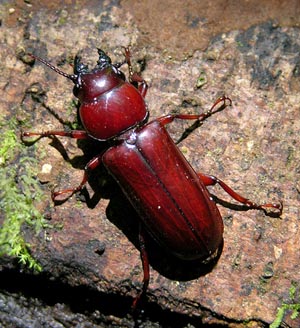|
Disclaimer While the authors have made every effort to provide accurate information in Longicorn ID, the authors, the University of New Mexico, Purdue University, and USDA/APHIS/PPQ specifically disclaim all legal liability with respect to the accuracy, completeness, or usefulness of any information contained in Longicorn ID. The authors and associated institutions shall assume no legal liability for any damages, including direct, indirect, consequential, compensatory, special, punitive, or incidental damages arising from or relating to the use of Longicorn ID or the information and materials provided by or linked from Longicorn ID. External Links Some web pages in Longicorn ID provide links to Internet sites for the convenience of users. The authors, UNM, and USDA/APHIS/PPQ are not responsible for the availability or content of these external sites, nor do the authors, UNM, and USDA/APHIS/PPQ endorse or warrant the products, services, or information described or offered by these Internet sites. Taxonomy It should be noted that no taxonomic or nomenclatural changes are proposed in Longicorn ID. We feel that an identification tool is not the appropriate outlet for such changes, and any inconsistencies herein are purely out of error, rather than an explicit taxonomic statement. As with any taxon of this size (i.e., 40,000 described species), there is uncertainty regarding the classification of several taxa. Not surprisingly, a few species are currently classified in one subfamily, but may be soon transferred to another. For example:
|
 Parandra (Parandra) glabra (Degeer, 1774) (Cerambycidae: Parandrinae: Parandrini) Monteverde, Costa Rica © K. Nishida |

